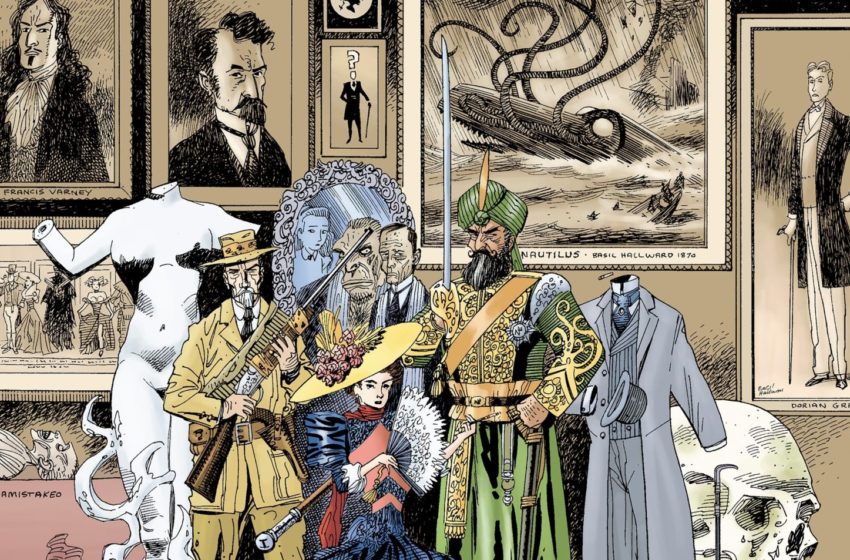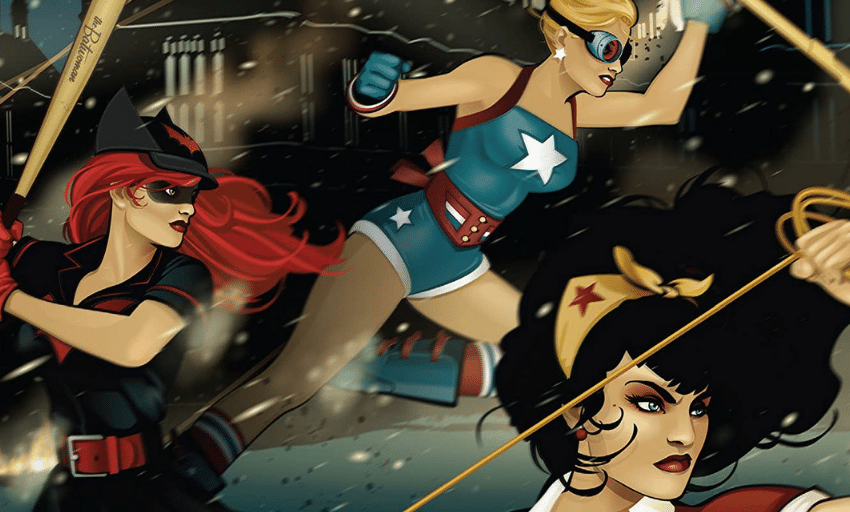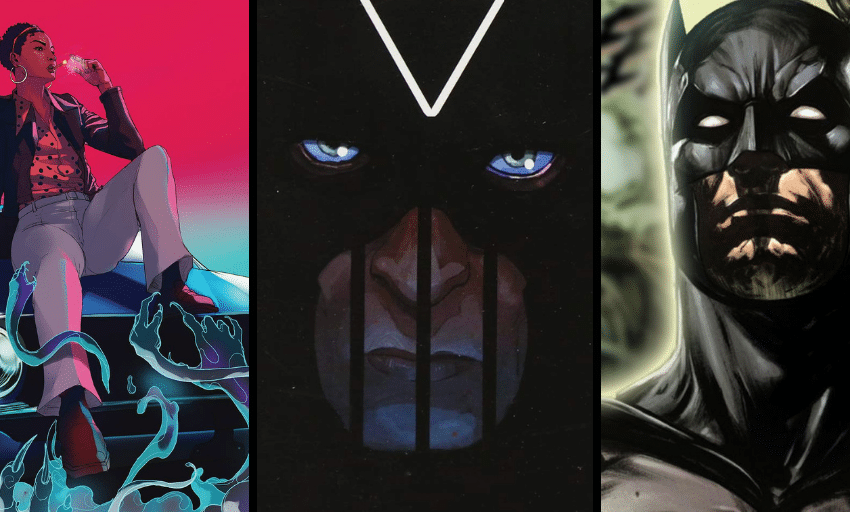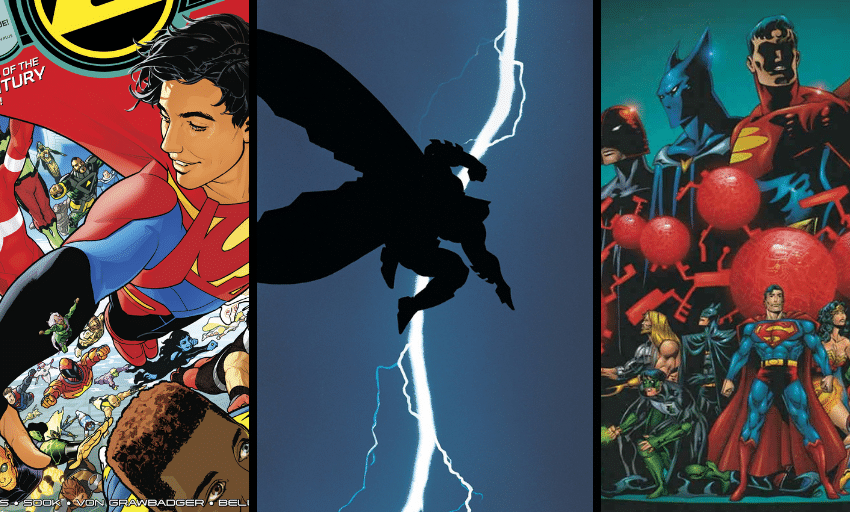Comics are literature as much as any other written form. There are works of soaring genius, there are works that please the masses and there are works that are just plain awful. From the days of Classics Illustrated, comics have reached out to traditional literature to find source material that was more “respectable” than what many believed comics to be. But in recent years, creators have taken classic literature and given it a twist in comic form. This week, Vault Comics’ The Picture of Everything Else takes a lead from Oscar Wilde’s The Picture of Dorian Gray, so for Bonus Reading, we’ll be looking at four other comics inspired by literature outside comics.
League of Extraordinary Gentlemen

Alan Moore’s League of Extraordinary Gentlemen is one of the densest works from a writer known for crafting comics that require annotations. The series starts in Victorian England, where its original two volumes tell classic adventure stories featuring characters taken from various works of literature set at the time. But from there, Moore and his artistic collaborator, Kevin O’Neill, branch out into literature from the entire annals of English history, from work Moore loves, like Virginia Woolf’s Orlando, to works he despises, like J.K. Rowling’s Harry Potter series (looks like Moore was ahead of the curve on that one).
The original cast of LoEG included Mina Harker (Dracula), Captain Nemo (20,000 Leagues Under the Sea), Alan Quartermain (King Solomon’s Mines), Henry Jekyll/Edward Hyde (Dr. Jekyll and Mr. Hyde), and Hawley Griffin (The Invisible Man). The first volume features the League caught in the middle of a turf war between two mobs in London, one run by Fu Manchu (although he is never named) and one run by Professor James Moriarty. The second volume deals with the invasion of the Martians from War of the Worlds.
The stories that follow, The Black Dossier, Century and The Tempest, dive deeper into British literature and popular culture. All of the featured characters in the first two volumes were characters well known in the American consciousness. Virginia Woolf’s gender-swapping Orlando became a central figure in these later volumes, and there are characters from books like Slow Chocolate Autopsy and analogs for characters from the classic British spy series The Avengers. I will admit freely to needing annotations to pick up all the references Moore drops in these later volumes, they are so obscure and so densely packed.
Moore’s work does push a lot of buttons on top of being tricky to understand without a grounding in what he’s talking about. He usually plays with characters who are racist caricatures from literature as they were originally presented, so they are still grossly racist by today’s standards. Also, sexual violence features prominently in more than one scene throughout, so be warned if either of these are triggers before diving in. But hey, it’s at least 1,000% less creepy than Moore’s other literary reinterpretation, Lost Girls.
Fables

Once upon a time, all the characters and creatures of folk and fairy tales lived happily in the Homelands. They fought, there were wars and battles, but things were mostly happy. And then the armies of The Adversary rose and rolled over the Homelands. Many were killed, and more still fled. Eventually most of the surviving Fables, as they called themselves, settled in the Mundane World among the Mundys, the non-magical humans. Those who could pass as human lived in Fabletown, a block of Manhattan. Those who could not lived on The Farm in upstate New York.
That is the basic premise at the beginning of Bill Willingham and (mostly) Mark Buckingham’s Vertigo epic, Fables. Set in the real world, characters from folk tales and fiction live lives of mundanity and quiet desperation. Centered on Snow White and a reformed lycanthropic Big Bad Wolf, as well as others like Rose Red, Prince Charming, Little Boy Blue and Pinocchio, Fables ran for 150 issues and was one of the centerpieces of the Vertigo renaissance that also included Y: The Last Man, Lucifer and 100 Bullets. The story slowly builds, ebbs and flows over time. The big battle with The Adversary ends halfway through the series, and after that readers get to watch how a world rebuilds after such catastrophe. The cast is gigantic, so I would not be able to call out every member, or touch on nearly all the plotlines that take place over these issues.
I can understand how this seems contrary to this list. Sure, folktales and fables are collected in books, but they are oral tradition fundamentally, not literature. And you would be correct. But characters in Fables come from literature as well. Pinocchio is a featured character. Ozma of Oz and a flying monkey named Bufkin appear from L. Frank Baum’s Oz series. Jack of Fables is a character who mashes up all the characters named Jack, from Jack the Giant Slayer to Jack Be Nimble. Many characters from Rudyard Kipling’s The Jungle Book are residents of The Farm.
On top of a 150-issue run (the final issue of which is a 160-page original graphic novel), Fables branched out into numerous spin-offs. Jack had his own series called Jack of Fables. Fairest was an anthology from different writers and artists featuring female Fables. There were various graphic novels and prestige format one-shots. There also is a Telltale episodic adventure game, The Wolf Among Us, which was adapted with additional scenes and story beats into a comic series.
Kill Shakespeare

I’m one of those fuddy duddies who actually loves Shakespeare. I’ve read the entire canon (except Henry VIII. I’m saving that for some time when I need some “new” Shakespeare), many of the plays multiples times and I keep a running list of which plays I have seen, so I can eventually say I have seen them all. But I’m not a purist. I don’t need my costuming to be Elizabethan or Jacobian, and I can respect a well-told reimagining of Shakespeare’s work. I’ve seen Romeo and Juliet so many times at this point, I think I’d rather see an interesting new West Side Story. And one of those complete reinterpretations that I get an absolute kick out of is Anthony Del Col and Conor McCreery’s Kill Shakespeare.
The first volume of Kill Shakespeare opens during an odd lacuna in Shakespeare’s arguably greatest play, Hamlet. Hamlet has been sent to England by his uncle, Claudius, with a letter that will have the king of England kill its bearer. When Hamlet pops up again in the play, there’s a little wink to what happened, something about pirates, but it’s this weird hole in the center of things. The first issue of Kill Shakespeare has Hamlet wash up on the shores of England after the pirate incident to find the country embattled. Richard III rules with an iron fist, having made an alliance with Lady Macbeth of Scotland, and only the Prodigal rebellion, led by Juliet Capulet, her bodyguard Othello and Sir John Falstaff stand against him. Now, the two sides compete for Hamlet, the prophesied Shadow King (no, not that one) who will find Shakespeare and his magical quill, which can rewrite reality and give victory to whichever side he allies with.
OK, let’s be up front: If you know the plays, absolutely none of this works canonically. The timelines don’t match, and there are characters alive after their plays who are dead at the end of said plays. But if you love a rollicking adventure story featuring all these characters, then this is great! Who would have thought Hamlet and Juliet would hook up? Who can see the ultimate evil triumvirate as Richard, Lady Macbeth and Iago? The ideas are crazy and so much fun. The writing doesn’t try to hit blank verse, which is good because more often than not, trying to sound like Shakespeare doesn’t really work. But the book captures the spirit of these characters and evolves some of them to a place they could not have reached if they did indeed die at the end of their play: See warrior queen Juliet.
There have been three follow-up series to the original maxi-series: The Tides of Blood, which takes the survivors of the original series to Prospero’s island from The Tempest; The Mask of Night, a pirate adventure featuring characters from Twelfth Night and Titus Andronicus; and Past Prologue: Juliet, the tale of how Juliet survived the end of her original play and how she met Othello. And if that all isn’t enough, there’s a board game. Because I’ve always wanted to play as Hamlet in a board game. You think I’m joking, but I totally am not.
The O.Z.

Dorothy Gale came home from the war. Not the Dorothy Gale you’re thinking of, not the one who flew over the rainbow, accidentally slew two wicked witches and came home to Kansas when she realized there’s no place like home. No, this Dorothy Gale is her granddaughter. She served in Iraq, and when she came home, she started taking care of Grandma Dorothy, who is slowly slipping away. Between her grandmother’s health and her own post-traumatic stress disorder, things are hard for Dorothy. But when a tornado sucks her up and drops her back in Oz, well, things don’t get much better. Because the land has changed, and there’s war afoot in the Occupied Zone, or as the locals call it, The O.Z.
Written by David Pepose (Spencer & Locke, Going to the Chapel), drawn by Ruben Rojas, colored by Whitney Cogar and lettered by D.C. Hopkins, The O.Z. was a Kickstarter from earlier this year that is shipping to backers as you read these very words. And credit where it’s due, the book is shipping at pretty much the anticipated drop date! Trust me, if you back as many Kickstarters as I do, you’d understand how impressive that is.
The first issue of The O.Z., a solid 44-page issue, is good comics. Pepose gets right into Dorothy’s head, letting the reader in to see how at ends she is in a world where she’s no longer at war, before thrusting her into a whole new one. The world building when readers arrive in the O.Z. is top notch. It sticks mostly with characters and settings those familiar with Oz only from the classic film would know, while laying smaller Easter eggs for those more familiar with the books and other Oz lore. Rojas’ art is astounding. He draws the real world of Kansas just as confidently as the magical Oz, and I won’t say a chill didn’t pass down my spine when I saw his illustration of a coming horde of armed flying monkeys.
The second of the three issues of The O.Z. will launch on Kickstarter early next year, and you would do well to jump on it then.
Matt Lazorwitz read his first comic at the age of five. It was Who's Who in the DC Universe #2, featuring characters whose names begin with B, which explains so much about his Batman obsession. He writes about comics he loves, and co-hosts the creator interview podcast WMQ&A with Dan Grote.






